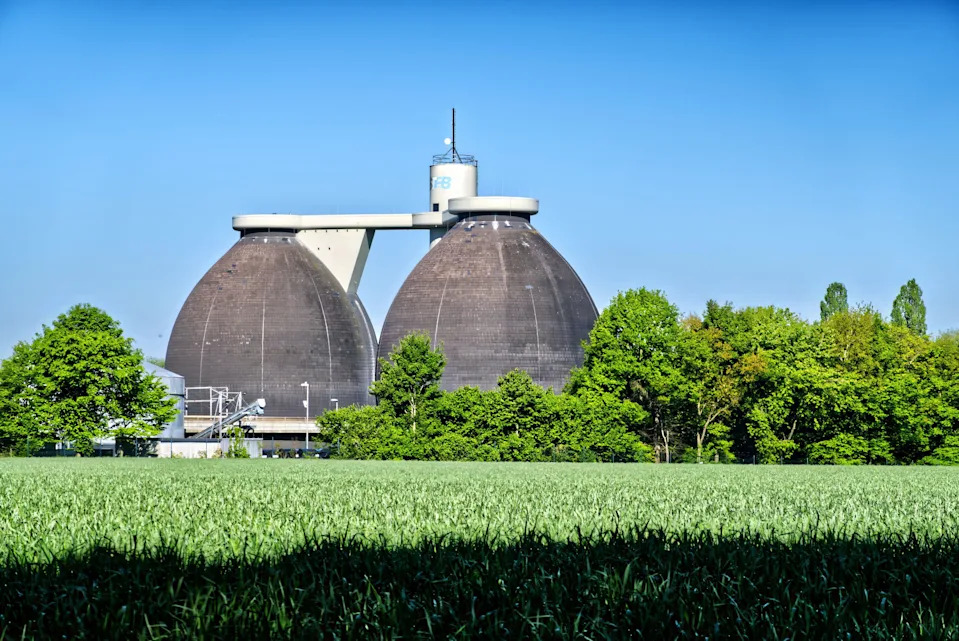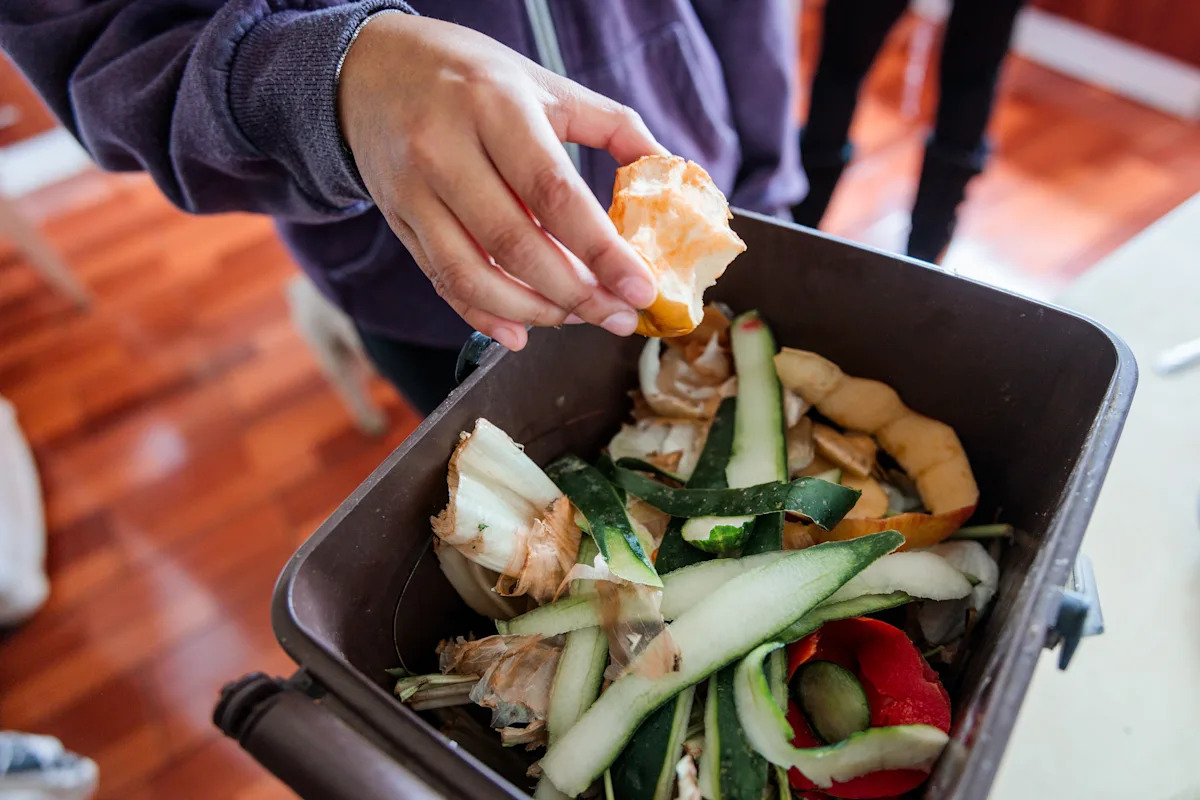For some, what happens to the contents of your household ‘food bin’ that many councils collect for recycling waste is perhaps even more mysterious than what happens to the plastic in our recycling bins.
Not every council offers food waste recycling at present, and overall the amount of household food waste actually fell by 9% between 2021 and 2022 (the last years for which data is available).
We waste an extraordinary amount of food in the UK – around 88kg per person per year – with fresh produce the most common discarded, followed by cooked meals, bakery, dairy and eggs, according to sustainability charity WRAP.
Five million tonnes of food waste was collected by local authorities in 2022, with 3.9 million tonnes going into black bins and ending up incinerated or in landfill, and 850,000 tonnes collected for composting or anaerobic digestion.
So what actually happens to your waste after it’s collected? Yahoo News spoke to Dr Adam Read, chief sustainability officer at Suez, a waste management company that covers 30% of UK households.
What happens to your waste after it’s collected?
That all depends on whether your food waste is mixed with garden waste at the point of collection.
If your collection is only food, it will go to an anaerobic digester, which breaks food down into usable gas and fertiliser.
“What will happen is you’ll get a separate vehicle that’s collecting that kind of organic material, because it tends to be a bit wet, it tends to be a bit sloshy,” Dr Read explains.
“You don’t want to put it anywhere near other materials you’re collecting.

Two large anaerobic digesters converting food waste into gas and fertiliser. (Getty)
“We would tend to take those vehicles direct to our anaerobic digester plant – a facility that works like a cow’s stomach, by fermenting the waste to digest it. It’s basically bugs digesting without oxygen at a warm temperature.”
“The tanks look like the silage tanks you see on lots of farms. Organic material will sit in there for a few days at the right temperature with the right oxygen mix, which is usually zero or very low, and the bugs break down the organic material into a soup that will be syphoned off.”
The food is then turned into two useful products – a gas which can be burned to generate electricity or used to power vehicles. And a fertiliser product that can be spread on fields.
“It’s a nice circular kind of system of organic material becoming organic material.”
In areas where food waste and garden waste are collected together, the material tends to be composted, Dr Read explains.
In-vessel composting sees the material shredded, added to water and then composted at 60C in vessels, before being formed into triangular heaps known as ‘windrows’.
They are turned every week for six to 10 weeks before becoming compost.
What is changing about food waste in the UK next year?
From the end of March next year, every household in every council area will have a food waste bin, which will be collected weekly.
At present around half of council areas have ‘limited’ food waste service provision and about a third have none at all, says Read. “They don’t have to. It’s not illegal. So they would have their food waste in their residual bin, and their residual bin would probably go into an incinerator, therefore not contributing to methane at the landfill site.
“But as of April next year, every household has to have a segregated collection of food waste because of the global warming capacity of that material as it degrades.”
All households will also receive the same waste collection services, rather than it varying by council.
The government hopes that the simplified guidelines will help households to understand what can and cannot be recycled.
Local authorities will still be able to decide whether (for example) plastic, metal and glass are collected separately or together.
Households must comply by 31 March 2026, while micro-businesses with fewer than 10 employees have until 31 March 2027.

